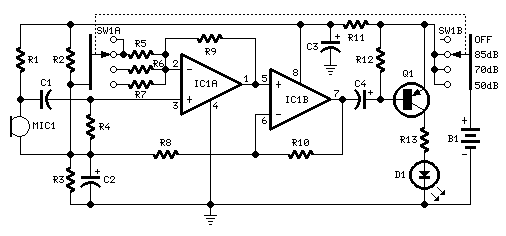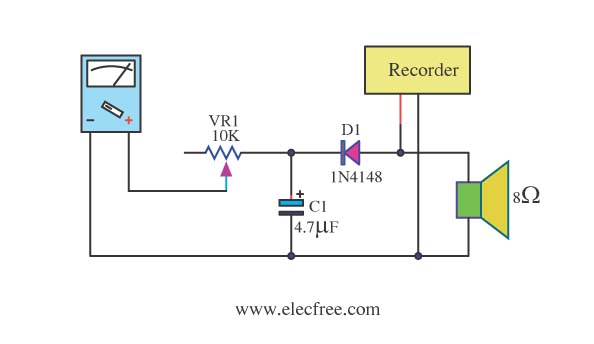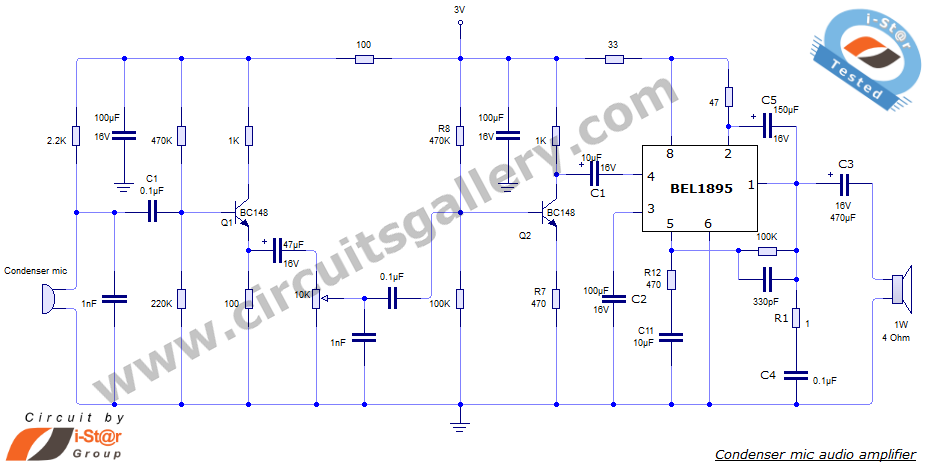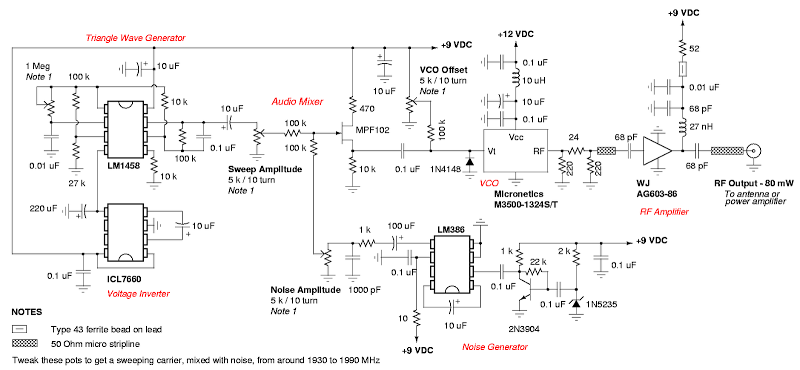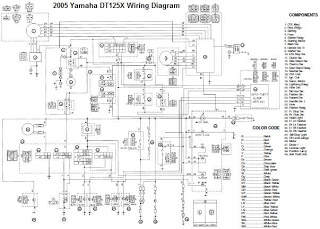
10 band graphic equalizer schematic

The diagram illustrates a circuit comprising 10 identical units, each varying only in the capacitance values of their capacitors, which determine the frequency band for each filter. Potentiometers are utilized to adjust the designated frequency regions in each unit. For stereo applications, the circuit is designed in two separate pieces, utilizing materials that minimize differences in frequency regulation between channels. Switch S1 serves to isolate the equalizer circuit when not in use, ensuring a flat response at the output. This circuit is intended to be connected between a preamplifier and a final power amplifier.
The circuit design features ten filter units, each tailored to operate within specific frequency bands dictated by the capacitance values of their capacitors. This configuration allows for precise tuning of audio signals across a range of frequencies, enhancing the overall sound quality. The use of potentiometers enables users to fine-tune the frequency response, allowing for customization based on individual preferences or specific audio requirements.
In stereo applications, the circuit is split into two identical sections, ensuring that both channels maintain a consistent frequency response. This design consideration is crucial for achieving a balanced audio output, preventing discrepancies that could arise from variations in component values or characteristics between the two channels.
The inclusion of switch S1 adds versatility to the circuit. When engaged, it isolates the equalizer circuit from the audio path, allowing for a direct signal flow that maintains a flat frequency response. This feature is particularly useful when the equalization is not desired, ensuring that the audio output remains unaltered during playback.
The overall circuit is designed to be integrated between a preamplifier and a final power amplifier. This positioning is strategic, as it allows the equalization process to occur before amplification, ensuring that the audio signal is optimally shaped before being sent to the power amplifier for driving speakers. Properly implementing this circuit can significantly enhance audio performance, providing users with the flexibility to tailor their listening experience.As shown in the diagram, there are 10 same units that only differ in capacitance values of capacitors which determine the frequency band of each filter. The potentiometers adjust the predetermined regions of frequency in each unit. If it is intended for stereo use then it will be supposed it is made in two pieces with as much as possible suited th
e materials, between the channels, so that do not exist differences in the regulation of each band frequencies. Switch S1 isolates the circuit EQ, when him we did not need and it ensures level [ flat ] response in the exit of circuit.
The circuit should be connected between preamplifier and in a final power amplifier. 🔗 External reference
The circuit design features ten filter units, each tailored to operate within specific frequency bands dictated by the capacitance values of their capacitors. This configuration allows for precise tuning of audio signals across a range of frequencies, enhancing the overall sound quality. The use of potentiometers enables users to fine-tune the frequency response, allowing for customization based on individual preferences or specific audio requirements.
In stereo applications, the circuit is split into two identical sections, ensuring that both channels maintain a consistent frequency response. This design consideration is crucial for achieving a balanced audio output, preventing discrepancies that could arise from variations in component values or characteristics between the two channels.
The inclusion of switch S1 adds versatility to the circuit. When engaged, it isolates the equalizer circuit from the audio path, allowing for a direct signal flow that maintains a flat frequency response. This feature is particularly useful when the equalization is not desired, ensuring that the audio output remains unaltered during playback.
The overall circuit is designed to be integrated between a preamplifier and a final power amplifier. This positioning is strategic, as it allows the equalization process to occur before amplification, ensuring that the audio signal is optimally shaped before being sent to the power amplifier for driving speakers. Properly implementing this circuit can significantly enhance audio performance, providing users with the flexibility to tailor their listening experience.As shown in the diagram, there are 10 same units that only differ in capacitance values of capacitors which determine the frequency band of each filter. The potentiometers adjust the predetermined regions of frequency in each unit. If it is intended for stereo use then it will be supposed it is made in two pieces with as much as possible suited th
e materials, between the channels, so that do not exist differences in the regulation of each band frequencies. Switch S1 isolates the circuit EQ, when him we did not need and it ensures level [ flat ] response in the exit of circuit.
The circuit should be connected between preamplifier and in a final power amplifier. 🔗 External reference
